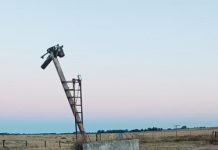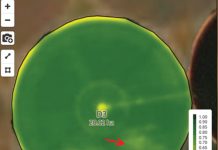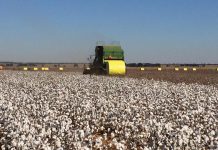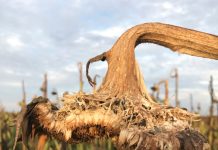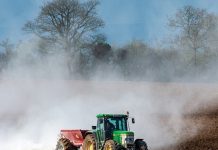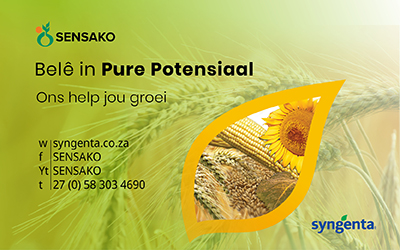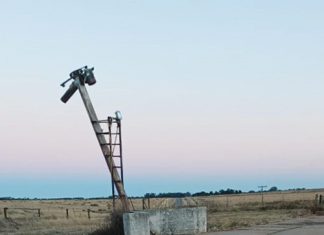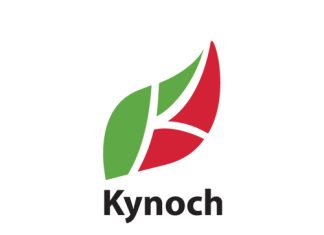
SA Graan/Grain contributor
The inclusion of livestock in conservation agriculture (CA) systems can vastly accelerate the potential and benefits of such systems, provided it is managed well. Research results and practical farming experiences shared at the ninth World Congress for Conservation Agriculture (WCCA9) in Cape Town last year included improved soil health, carbon sequestration, nutrient cycling, and water uptake associated with livestock in such systems.
Strength in variety
When considering the three fundamental principles of CA – no soil disturbance, continuous living roots in the ground, and species variety – livestock serves to add variety at various levels of a CA system, says Rens Smit, scientific technician at the Western Cape Department of Agriculture.
‘With livestock in your system, micro-organisms in the soil need not only depend on decomposing plant matter for survival; they can also feed on dung and urine in order to grow and complete their life cycle. The grazing action also stimulates plant growth, which improves the stocking rate.’
Ruminants can vastly increase the amount and variety of nutrients available to soil microbes, because their digestive systems break down plant matter through both fermentation (performed by gut microbes) and digestion (performed by enzymes). Any living microbes and nutrients that survive the digestive process are deposited in the soil as dung and become available to soil microbes to feed on or perform their own soil-improving actions.
‘Effectively the livestock are continuously inoculating the soil. Thus far we don’t have scientific proof that this makes a difference to the success of a CA system, but logically it makes sense that it would,’ he says.
Magnus Theunissen, a grain and cattle producer from the Ottosdal district in North West who runs CA trials with livestock integration on his farm, is even letting his cattle overnight on his CA trials in order to get the most out of microbe transfer from the cattle to the soil.
‘Animals have been created in a certain way to graze in a certain way, and we have to stop working against nature. The actions of the dung, urine, and spit of the animals must all make a difference. I also don’t believe that livestock can cause soil compaction if they are managed correctly.’
Like producers interviewed on Peter Byck’s documentary series Roots so deep (you can see the devil down there), Theunissen is also noticing increased biodiversity around trials that include livestock. He is particularly heartened by all the dung beetles, which fulfil a valuable role in making microbes in dung available to soil microbes.
Healthy soil, healthy plants, healthy livestock
A fundamental principle of cover crop mixes for grazing is to balance the number of grasses and legumes in order to feed livestock the correct proportion of carbohydrates versus protein. Similarly, the correct balance of legumes and grasses will ensure optimal conditions for soil microbes. ‘Whether you’re raising livestock or planting cover crops, in both instances you’re ultimately feeding soil microbes, the difference being that soil microbes cannot feed on live plant matter growing above ground,’ says Smit.
By the same token, nutrient deficiencies in vegetation and cattle mirror deficiencies in soil. ‘Weak growth in pasture systems is often due to an imbalance in soil trace elements and pH, in turn leading to lower nutrient quality in the vegetation that grows in that soil. There are proponents of regenerative farming who make trace elements available to their livestock as additional feed. Those trace elements end up in the dung, and eventually in the soil, where they restore the chemical deficiencies and improve soil health and biodiversity through nutrient cycling. Plants growing in that soil become more nutritious, and consequently livestock nutrition improves.’
Weed control
Smit concedes that the argument of nutrient cycling may not convince a producer to introduce livestock in a CA system, because it is an abstract concept and research data are lacking. Weed control, on the other hand, is an obvious benefit and one of the biggest advantages of livestock in the Western Cape Department of Agriculture’s long-term trials at Langgewens research farm.
‘Broadly speaking, the two available modes of action against weeds are mechanical and chemical. Without grazing animals (effectively mechanical weed control), a producer will be 100% dependent on chemical weed control. In such a scenario, the question is not whether weeds will develop resistance to chemicals, but when. The only other alternative would be to put a seed destructor on your combine harvester. It costs close to R1 million, but then you will again have two modes of action against weeds.’
He says in effect livestock acts as both mechanical and biological weed control, as it encourages a diversity of microbes in the plant roots and also stimulates plant diversity by limiting growth of strong-growing and pernicious weeds.
Research conducted by the Department of Agronomy at Stellenbosch University in collaboration with the Western Cape Department of Agriculture, has highlighted the weed control benefits of integrating livestock into CA systems.
Prof Pieter Swanepoel, head of the department, says that livestock serves as a form of mechanical and biological weed control and complements no-tillage (NT). ‘Using NT and livestock in crop rotation effectively reduces the weed seedbank while improving soil health compared to monoculture tillage systems. Our findings suggest that both NT and livestock foster a more balanced species composition of weeds, while the abundance of weeds (i.e., weed pressure) is much lower. Despite the challenges posed by herbicide resistance, our studies support the idea that producers should adopt NT and integrate livestock to manage weeds while enhancing soil quality.’
A more resilient business
The obvious advantage of livestock in a CA system is the diversified income streams. Theunissen’s intercropped trials enable him to ‘stack two farming enterprises on top of each other’. In the Western Cape, the popular Dohne Merino diversifies a grain producer into meat and wool income streams, even if livestock generally comprises a far smaller proportion of farming enterprises than grains.
In the eight crop rotation systems at Langgewens, the four with livestock are the most profitable.
Smit believes this is due to a combination of beneficial effects associated with grazing and the fact that wheat plantings in these systems always follow after a legume crop, which adds nitrogen to the soil. Wheat produced in the systems that incorporate livestock also had higher protein content than wheat from systems without livestock.

(Photo: Amelia Genis)
Second thoughts about livestock
Despite all these advantages, many Western Cape producers are having second thoughts about livestock in their CA systems. On top of stubbornly low red meat prices and middling wool prices, the wheat price is considerably lower than that of white maize. Livestock also requires considerably more labour than a grains-only operation, which becomes particularly costly in farming operations on multiple farms. Veterinary costs are rising, and cryptosporidium has caused serious losses in sheep operations, in particular those kept in intensified systems.
Cobus Bester, producer from Moorreesburg who keeps livestock in an integrated CA system, is considering reducing his livestock numbers to the point where they can be profitable without any additional feed. ‘We don’t want any feed costs for the livestock, because they generate too little income.’
He estimates that 80% of the South African population cannot afford red meat (even at the current low prices), leaving him dependent on the remaining 20%. Unabated stock theft also leaves many producers with no other choice but to abandon sheep farming, particularly those close to towns.
‘I also have to consider the effects of climate change, which could lead to a 10 to 20% reduction in rainfall in my area in the next 30 to 50 years, so I have to adapt timeously.’
Smit cautions that incorrectly managed livestock can also be detrimental to a CA system. ‘Keeping too many animals will result in overgrazing and degradation of the soil cover, which can lead to soil compaction. Your livestock numbers must be optimal. You may have to reduce your numbers during dry climate cycles, or otherwise only keep enough animals for dry years and accept that additional potential grazing will decompose during wet seasons.’
In the same way that Viljoenskroon regenerative producer Cobus van Coller believes that cover crops must generate income, Smit believes that a livestock component in a CA system must be profitable. ‘It will not do to only keep livestock for the benefits it adds to the grains business. It must stand on its own. You have to manage the livestock correctly to make it profitable. The numbers must be optimal so that it doesn’t cost you a lot of money to look after the livestock.’
The bigger picture
Dr Cobus Oberholster, former general manager for livestock, properties and auctioneers at BKB, believes the demand for red meat is cyclical, and that producers should not be overly hasty in cutting back on their livestock.
‘The current down cycle is quite long, it’s been going on for almost two years, but it’s part of the macro-economic conditions worldwide; consumers don’t have much spending power. Still, red meat consumption projections are increasing worldwide; it’s a food choice of middle- and high-income consumers, and our exports are increasing, particularly to the Middle East.
Oberholster concedes that a livestock case may be more difficult to make for the Western Cape with its smaller herds, but he still believes the benefits outweigh the downside. ‘The livestock component still brings liquidity in a system which producers should not underestimate. That animal has a cash value every morning, which is invaluable when you’re in a tight spot. I’ve seen times when the maize price was R600/ton, and livestock paid the children’s university fees.’
He believes that much can still be done to make stock farming in South Africa more efficient, be it cattle or sheep. Smit adds that the profitability of livestock in a grain system cannot purely be calculated on the cost of the livestock.
‘It is not viable to buy feed to keep your livestock going, but giving them a small amount of lick makes sense to me. The lick may have cost you a lot of money, but if you hadn’t bought the lick, you would have had to feed those elements to your plants in another form, because that shortage will eventually arise in your plants and your soil.’
Success stories
For a number of well-known South African conservation and regenerative producers, among them Egon Zunckel from Bergville in KwaZulu-Natal, Danie Bester from Balfour in Mpumalanga, Cobus van Coller from Viljoenskroon in the Free State, and Cobus Bester from Moorreesburg in the Western Cape, livestock integration was a natural progression after adopting and adapting CA practices in their systems. Research findings presented at WCCA9 from both summer and winter rainfall areas show considerable yield increases, drought resilience, and a valuable addition to farm income.
The benefits of livestock in such systems are particularly evident under high-density grazing conditions, where conditions mimic the movement of large herds across grasslands.
A five-year research study by respected local pasture scientist Dr Frits van Oudtshoorn on Reitz regenerative producer Danie Slabbert’s farm, Van Rooyenswoning, compared ultra-high-density non-selective grazing with conventional selective grazing. It showed an increase of 50% in good grazing grasses over the study period. Compared to selective grazing, the ultra-high-density non-selective grazing pastures had 80% more indigenous legumes, 64% more grass biomass, a 60% increase in botanical diversity, a doubling in the amount of rainfall absorption, and a doubling of the grazing capacity by the end of the study.
According to Van Oudtshoorn these benefits stem from the effects of high concentrations of urine and dung combined with the cattle’s hoof action on the soil. They can occur both in pasture conditions and where livestock are integrated in a CA grain production system.



